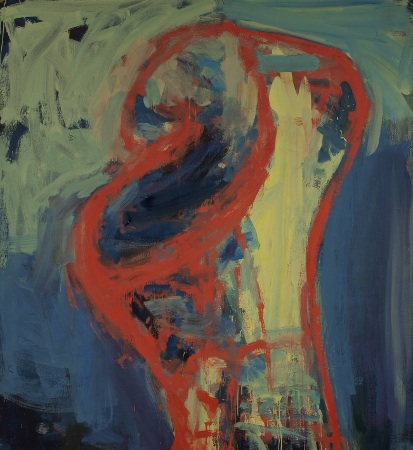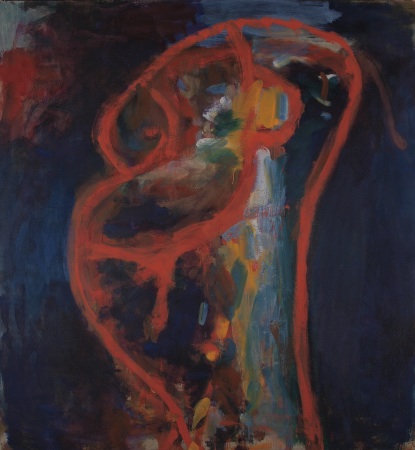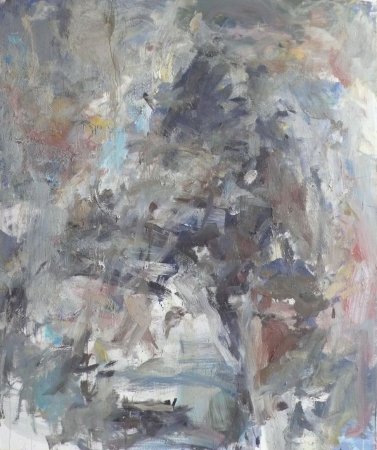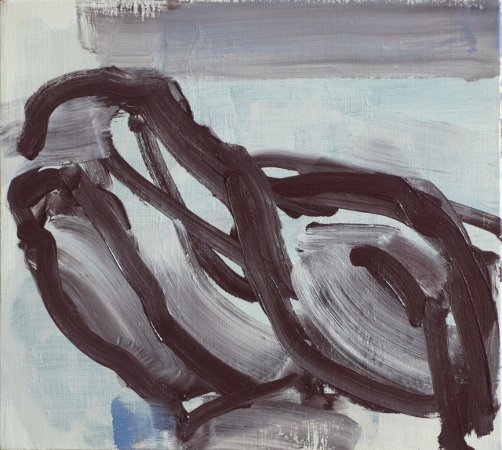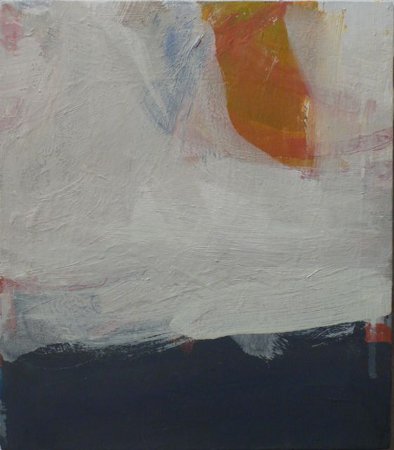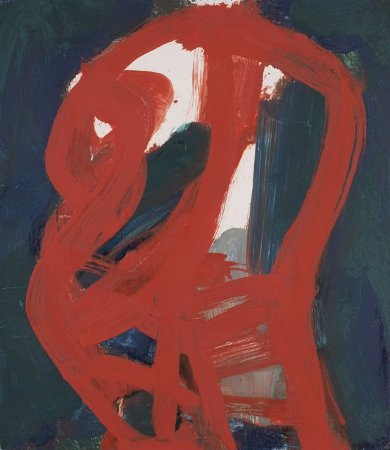Routine: Lex Braes
with video work by Allan Kaprow and of Shōji Hamada
January 15 - February 26, 2012
The revolving bristles of a floor-polishing machine; the spin of a potter's wheel; the painting of an image approached one hundred times before. Actions that produce: a clean floor, pottery, painting, understanding.
Circling, repeating, Routine.
Show Room presents the first New York solo show in over ten years of Scottish-born, New York-based artist, Lex Braes. Drawings and paintings by the artist hang beside videos of two of his most important artistic influences: Allan Kaprow (1927 - 2006), and Shōji Hamada (1894 - 1978). Braes stands for and between what appear to be two quite distinct traditions: Kaprow, one of the most innovative performance artists of the twentieth century, and Hamada, a Japanese potter instrumental in the Japanese mingei, or folk art movement.
By the 1970s, Allan Kaprow had transitioned from the communal performances for which he is perhaps most remembered, the "Happenings", into an investigation of the personal dynamics between smaller, more intimate groups of people. Exemplary of this shift,Kaprow's Routine series consists of three performances under this name, all realized between the years of 1973 – 1975. Show Room presents 2nd Routine (1974), a video of specific scenarios between a pair of figures, A and B, that take place in a non-descript hallway. In Second Routine, Kaprow deliberately overturns formalized behavioral patterns through gestures such as a handshake held until hands sweat or a freshly polished floor forcefully ruined by chair legs.
Kaprow was Braes' mentor during his grad school years at the University of California, San Diego in the 1980s. Kaprow, a champion of ephemeral performance, may seem an unlikely influence on Braes, a painter so committed to the tradition of his craft that he actually makes all of his own paints. This result is paint devoid of the glossy seduction of ordinary oil paint, reduced to its most basic nature of color and pigment. This devotion to material and craftsmanship is indeed the link that connects Braes to his other great influence, Shōji Hamada. On view in the exhibition is an excerpt from a video of the celebrated potter demonstrating his techniques to a live audience in Australia in 1965. Hamada was revered during his lifetime for assimilating nearly forgotten folk ceramic techniques and for revolutionizing the studio pottery of Japan.
Braes' observation of Kaprow's evolving approaches and ever-changing instructions for his own performances resonated with the painter. Braes came to equate the growth of ideas with the cognitive performance of ritual and routine: a potter shaping clay or a painter layering paint to build an image. Braes finds strength of meaning through his painting routine, continually reconsidering a single image for years. Here, small works on paper illustrate his repeated approaches to the imagery that consumes him and large paintings thoroughly command the space he inhabits between concept and craft.
Lauren Chinault
